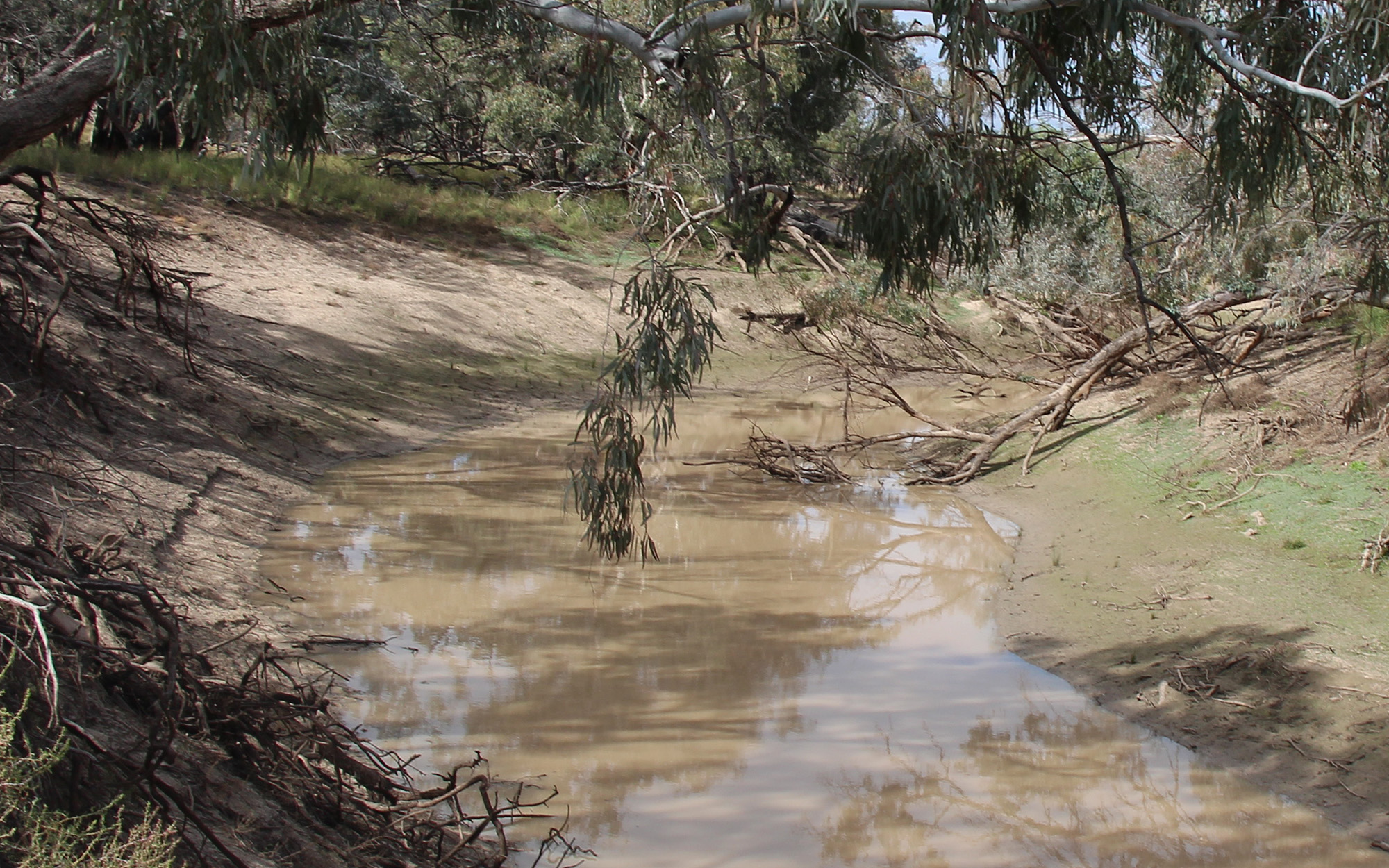About the Condamine-Culgoa catchment
The Condamine-Culgoa catchment is in northern NSW and southern Queensland. The rivers of this system, including the Culgoa, Birrie and Bokhara, enter the Barwon River between Bourke and Brewarrina.
The catchment covers a total area of 162,640 square kilometres of which 16 per cent, or 26,060 square kilometres, is within NSW. The NSW portion of the catchment is a flat landscape of extensive floodplains with elevations ranging between 100 and 150 metres.
Rivers and tributaries
The Condamine River begins at Warwick in south-eastern Queensland, flowing in a north-westerly direction across the Darling Downs, before becoming the Balonne River near Surat. It is joined by the Maranoa River, a major tributary that drains a large area north of St George.
About 70 kilometres downstream of St George, the river splits into 5 channels – the Narran, Bokhara, Ballandool and Culgoa rivers, and Briarie Creek. After crossing the border into NSW, the Bokhara River splits again, forming the Birrie River that flows south-east, eventually joining the Culgoa. The Narran River terminates in a series of floodplain lakes, while the Bokhara and Culgoa flow into the Barwon-Darling River downstream of Brewarrina, during times of very high flow.
Water storages
In Queensland, the Condamine-Culgoa River is regulated by Beardmore Dam (101,000 megalitres) on the Balonne River in Queensland.
There are no major storages in the NSW catchment, leaving the streams in the NSW portion of the basin unregulated.
Towns
Major towns in Queensland include Toowoomba, Roma and St George.
Lightning Ridge is the major town in the NSW portion of the catchment. Brewarrina is located on the Barwon River at the bottom of the catchment.
Water users
Grazing accounts for 95 per cent of land use in the NSW catchment. Water is used mainly for irrigation, stock and domestic use, with some volumes of water for town water supply. The irrigation industries in the basin include major cotton growers.
Narran Lake Nature Reserve at the end of the Narran River, protects important wetlands of the Narran Lakes system, and was listed as a Ramsar wetland in 1999. The Narran Lakes are nationally and internationally significant as a major waterbird breeding site.
The water resources of cross border systems are shared between NSW and Queensland under the New South Wales–Queensland Border Rivers Intergovernmental Agreement 2008.
The capture and storage of floodwaters by Queensland water users is a key concern for downstream NSW water users.
Water users along unregulated creeks and streams do not always enjoy a reliable water supply due to the highly variable nature of flows in the basin.
